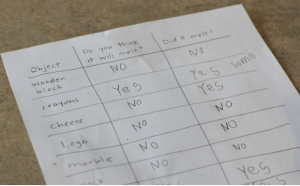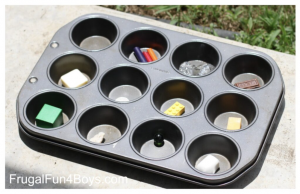7. Share your social studies mini spark recording page with your teacher/EY coordinator.
7. Share your social studies mini spark recording page with your teacher/EY coordinator.
 “Hidden Figures” is a biographical book about four African American women who worked as mathematicians at NASA during the Space Race and played pivotal roles in the Apollo program. Their contributions were essential in advancing America’s space exploration efforts, particularly during the historic Apollo missions to the Moon
“Hidden Figures” is a biographical book about four African American women who worked as mathematicians at NASA during the Space Race and played pivotal roles in the Apollo program. Their contributions were essential in advancing America’s space exploration efforts, particularly during the historic Apollo missions to the Moon1. Set up your social studies mini spark recording page: #60: Hidden Figures
2. Record the names of the mathematicians you will learn about in this mini spark on your recording page: Dorothy Vaughan, Mary Jackson, Katherine Johnson, and Christine Darden.
3. Listen to Hidden Figures: The True Story of Four Black Women and the Space Race. For each of these dates you hear in the story, pause the story and write a phrase about that date.
1943, 1945, 1951, 1953, (1950s), 1957, 1961, 1962, 1967, 1969
4. In 3+ sentences explain how Dorothy Vaughan, Mary Jackson, Katherine Johnson, and Christine Darden participated in some of NASA’s greatest successes. Use details from the story. Add your response to your recording page.
5. Read more about Katherine Johnson at this Wonderopolis page. Make a mini timeline on your recording sheet. Add 5 dates with information.
6. Share your social studies mini spark recording page with your teacher/EY coordinator.
Check out the Mission to Mars badge and Space traveler badge at the EY Website.


 Friendly numbers are a special type of number that have a unique connection with other numbers. To understand this relationship, we will add up all of the factors of a number and then we look at the index of a number and compare it to the index of another number. Check it out in this mini spark.
Friendly numbers are a special type of number that have a unique connection with other numbers. To understand this relationship, we will add up all of the factors of a number and then we look at the index of a number and compare it to the index of another number. Check it out in this mini spark.1. Set up your math mini spark recording page: #102: Friendly Numbers
2. Read this paragraph to review what “Factors” are.
Factors are numbers you multiply together to get another number. A factor of a number divides the number evenly, with no remainder.
What are all the factors of the number 8? 1 2 4 8
What are all the factors of the number 24? 1 2 3 4 6 8 12 24
Write the factors of the number 40 on your recording sheet.
3. Scroll down to the bottom of this page to see if you have the correct numbers for step 2. If you do put a star on your page. If you do not, add the correct numbers.
4. Look over these 6 questions before your start watching the video. Number your paper from 1-6. As you watch answer each of the questions.
5. Share your math mini spark recording page with your teacher/EY coordinator
Answers for step 3
Factors of 40 are 1, 2, 4, 5, 8, 10, 20, 40
For more information, visit: https://stonesoup.com/how-to-submit-writing-and-art-to-stone-soup/
 Fit words into a grid in this popular game, often seen in puzzle magazines as fill-ins. The grid looks like a crossword, but there are no normal clues. Instead you must find the right place in the grid for each word from a given list.
Fit words into a grid in this popular game, often seen in puzzle magazines as fill-ins. The grid looks like a crossword, but there are no normal clues. Instead you must find the right place in the grid for each word from a given list.1. Set up your language arts mini spark recording page: #80: Word Fit Puzzle
2. Watch this short intro video. What is the goal of this game?
3. Go to the Word FIt Puzzle website. Explore the grid sizes and the difficulty levels. Record all of those on your recording page.
4. Start easy to get the hang of it. Choose a level. Record your choice. Play a level. Take a screenshot of your ending time and add it to your recording page or write your ending time on your recording page.
5. Move to a harder level. Choose a level. Record your choice. Play a level. Take a screenshot of your ending time and add it to your recording page or write your ending time on your recording page.
6. What do you like about this game. What changes would you recommend?
7. Share your language arts mini spark recording page and visual with your teacher/EY coordinator.
Want to keep playing? Keep moving up levels as you are ready. Document your progress. Talk to your EY coordinator about doing these puzzles to earn a badge.
 There is a wealth of information when it comes to volleyball! Whether you’re examining individual player statistics, team standings, or breaking down a specific match… MATH IS EVERYWHERE IN VOLLEYBALL!
There is a wealth of information when it comes to volleyball! Whether you’re examining individual player statistics, team standings, or breaking down a specific match… MATH IS EVERYWHERE IN VOLLEYBALL!Check out the Roster Math Badge at the EY website.

 If you like being out on water but aren’t keen on waves, you might want to consider bringing some olive oil with you. In this mini spark you will see that just one tablespoon of olive oil poured over water can spread out within minutes, calming the waves around you.
If you like being out on water but aren’t keen on waves, you might want to consider bringing some olive oil with you. In this mini spark you will see that just one tablespoon of olive oil poured over water can spread out within minutes, calming the waves around you.1. Set up your science mini spark recording page: #29: Calming the Waves
2. Watch this teaching video. Record all of the vocab words from the video on your recording page. Add a short definition.
3. Read these questions to get prepared for the next video.
4. Watch this PBS video. As you watch the video, you will hear the answers. Record each of the answers on to your recording sheet.
5. Share your STEAM mini spark recording page with your teacher/EY coordinator.

1. Set up your Early Enrichment Mini Spark recording page: 68: SNOW + ENGINEERING = FUN
2. Learn about the engineering behind snow building. Record 5 details on your recording sheet.
3. Watch these kids creating on snow people that are built out of paper, tape, plastic bags, and newspaper. Did you like the final project? Explain why or why not.
4. Build a snow creature. You can build it out of snow if you are doing the mini spark while there is snow on the ground, or you can build it out of materials. Do not buy anything, use materials you have around the classroom or your house. If you build your snow creature out of materials, if doesn’t have to be as big as the examples in the video unless you want it to be.
5. Take a picture of your project ½ way through and then at the end. Add your pictures to your recording page.
6. Share your STEAM mini spark recording page with your teacher/EY coordinator.

1. Set up your early enrichment mini spark recording page: #66: What Melts in the Sun?
2. Ask your parent or guardians permission first before you start.
Experiment steps
1. Set up your recording page with three columns and 12 rows.
2. Put a title at the top of each column
Object Do you think it will melt? Did it melt?

3. Find a muffin tin.
4. FInd 12 ordinary household items that make you ask….”Does this melt in the sun?”
5. Take a picture of your tin.

5. Write those items down on your recording sheet.
6. Decide if you think the item will melt. Write YES or NO for each item.
7. Choose a day where the temperature is at least 85 degrees.
8. Put your muffin tin with the items in the full sun and wait at least 20 minutes.
9. I know it’s hard to wait 20 minutes, but you can do it!!! After the 20 minutes is up, go check on your results!
10. Fill in the column with the results of your experiment.
11. Take a picture of the tin and the items.
12. Now, for the most important step: CLEAN UP AND PUT THINGS BACK!
3. Share your science mini spark recording page and your project pictures with your teacher/EY coordinator. We can’t wait to see it!
Lesson adapted from: https://frugalfun4boys.com/simple-science-experiment-for-kids-what-melts-in-the-sun/
 Peter H. Reynolds is a champion of creativity and a best-selling author and illustrator. His books, including The Dot, Ish, The Word Collector, and Happy Dreamer, are published in over 25 languages. They inspire children and adults with messages about creativity, bravery, empathy, and self-expression.
Peter H. Reynolds is a champion of creativity and a best-selling author and illustrator. His books, including The Dot, Ish, The Word Collector, and Happy Dreamer, are published in over 25 languages. They inspire children and adults with messages about creativity, bravery, empathy, and self-expression.3. Read the information about Peter Reynolds, his book The Word Collector, as well as the interview at this website. On your recording page, record at least 5 details about what you learned from reading the interview.
4. Hutch Magazine is a semi-annual literary and creativity magazine for kids, directed by Peter H. Reynolds. It showcases stories, art, poetry, book reviews, travel logs, and interviews created by children. Add one sentence to your recording sheet explaining Hutch Magazine.
5. Go to the Hutch Magazine site. The issues are numbered and the theme of the issue is written under the number. Pick an issue that you would like to read. Record the issue # and the theme you choose on your recording sheet.
6. Choose 5 different stories/poems to read from the issue. On your recording sheet record the following 3 items for each piece you read.
7. Share your language arts spark recording page with your teacher/EY coordinator.
To write your own story to be submitted to be part of Hutch Magazine, check out the Hutch Magazine badge at the EY website. Check out the Dot Day STEAM Mini Spark.

